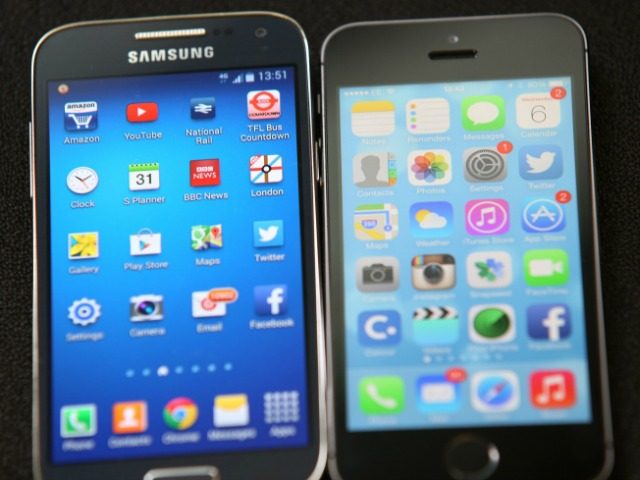For the first time in 130 years, the U.S. Supreme Court heard oral arguments this week in a “design patent” case — Apple vs. Samsung. The case has already produced a $400 million award for Apple.
The case involves Apple claiming that Samsung had infringed on its iPhone design for over a decade. After a $400 million judgment in favor of Apple, and five years of spectacular legal wrangling in lower courts, Samsung appealed to the Supreme Court.
The Federal Circuit Court of Appeals had affirmed that Samsung copied the iPhone’s distinctive front screen and graphical user interface infringed on Apple’s “design patents,” and was subject to an “award of total profit on the entire product as sold,” under U.S.C. § 289 of intellectual property law.
Samsung is not contesting that it infringed on Apple’s patent, but is arguing that how damages are calculated in “design patent” cases is not fair. The lower court ruled that if a single “component of a product” infringes on a patent, then the violator can be compelled by the courts to turn over all the profits on the product.
Samsung argued that patent infringement awards for a product as complicated as a smartphone that relies on hundreds of patents should be limited to only to the profit on the single component that suffered patent infringement.
The case was originally filed in 2011 as the first of two patent clashes between the planet’s dominant cell phone manufacturers and involves a number of now-ancient Samsung phones, such as the Galaxy S II.
The vast majority of Apple’s $400 million verdict is based on “design patent” infringement for the way both Samsung phones looked at the time. There is only a small award to Apple for Samsung’s infringement on the way Galaxy devices work like iPhones.
Samsung argued that judges in design patent cases should require “market studies to see extent to which the design affected the consumer.” The company acknowledges that this idea of an “apportionment” in a design patent case currently “runs headlong into the statute.”
Samsung states that even granting the importance of the screen and interface to its Galaxy phones’ success, it should not be held that “all” the corporation’s profits on a sale of each phone should go to Apple, and the damage award should be reduced.
The stakes in the Apple/Samsung case are huge for the tech industry, because Samsung did not infringe on any copyrights or trademarks held by Apple, nor did it involve “utility patent” issues regarding product functionality that are often heard by the Supreme Court. It has been 60 years since a dispute involving a “design patent” granted for “novel designs” has reached the Supreme Court.
Since the appeal to the Supreme Court involves how to calculate damages, both Apple and Samsung have offered analysis that the Court could follow to decide the case, without re-interpreting the 19th Century right that any person who applies a patented design “to any article of manufacture” is “liable … to the extent of his total profit.”
Samsung argues that given the thousands of innovative elements that go into a modern electronic devices, it makes no sense to award “all” of Samsung’s profits because a few of those elements were infringed.
Apple argued that the relevant provisions of the law and 130 years of case law history should assure that a person who applies a patented design “to any article of manufacture” – language that presupposes an “article of manufacture” of which a patented design is only a part – calls for an award of the “total profit.” Apple stated that this is most easily read to mean the total profit on the article of manufacture, according to the Scotus blog.
Apple pointed out that the 1886 Supreme Court decision in Dobson v. Dornan, which interpreted the predecessor patent law to award only the damages attributable to the “patented design element,” caused a huge uproar at the time. Congress then reacted by rewriting the statute to compel an award of the “total” profit.
Apple’s Supreme Court brief reminded the high court that the iPhone introduction on June 29, 2007 changed the telecommunications world and led to the rapid adoption of smartphone innovation.
That argument motivated big brands like Google, Dell, HP, Lenovo, Tiffany & Co., and Adidas, plus a string of top academics, to intervene in the case to argue that a broad “all” profits ruling would stifle new innovations.
The transcript of the Supreme Court’s Apple v. Samsung oral arguments is fascinating, because of the quality of the lawyers and the spectacular financial implications if the Apple verdict survives Samsung’s challenge.
In the other Apple vs. Samsung case, an appeal to the full federal appeals court recently overturned an earlier three-judge panel and reinstated the trial jury verdict that awarded Apple $119 million in damages. Samsung says it is considering also appealing that ruling to the Supreme Court.

COMMENTS
Please let us know if you're having issues with commenting.